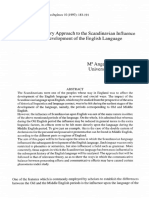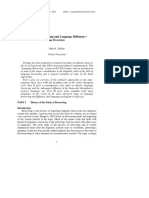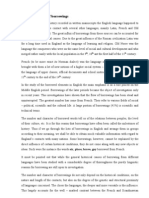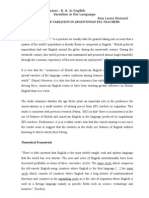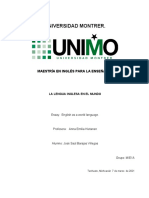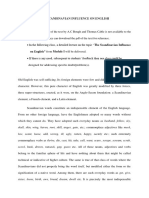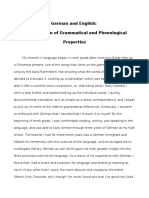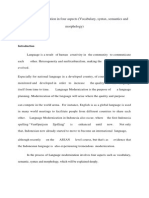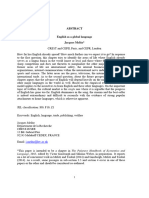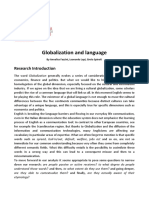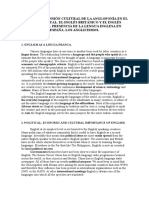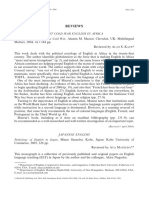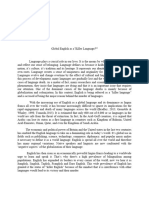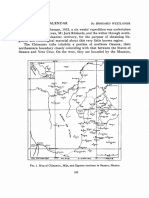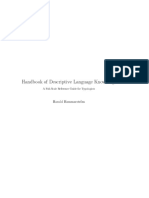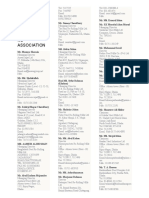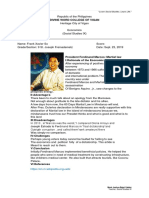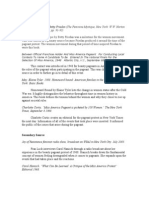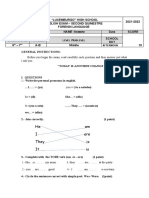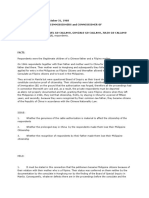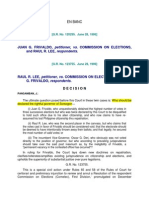0% found this document useful (0 votes)
95 views4 pagesThe Influence of English On The Languages in The Nordic Countries
This document discusses the influence of English on the languages of Nordic countries. It notes that English has become an important global lingua franca used widely in Europe and internationally in domains like business, science, and culture. The rise of English has led to concerns about its potential negative influence on other languages through massive borrowing on all linguistic levels. The document outlines several studies presented in this special issue of the journal that examine the impact of English in the vocabularies and structures of Nordic languages like Norwegian, Swedish, Danish, and Icelandic through analyses of language data, surveys of attitudes, and comparisons across time periods and social groups. The goal is to better understand how the spread of English may differ across Nordic languages and communities
Uploaded by
Carlos WagnerCopyright
© © All Rights Reserved
We take content rights seriously. If you suspect this is your content, claim it here.
Available Formats
Download as PDF, TXT or read online on Scribd
0% found this document useful (0 votes)
95 views4 pagesThe Influence of English On The Languages in The Nordic Countries
This document discusses the influence of English on the languages of Nordic countries. It notes that English has become an important global lingua franca used widely in Europe and internationally in domains like business, science, and culture. The rise of English has led to concerns about its potential negative influence on other languages through massive borrowing on all linguistic levels. The document outlines several studies presented in this special issue of the journal that examine the impact of English in the vocabularies and structures of Nordic languages like Norwegian, Swedish, Danish, and Icelandic through analyses of language data, surveys of attitudes, and comparisons across time periods and social groups. The goal is to better understand how the spread of English may differ across Nordic languages and communities
Uploaded by
Carlos WagnerCopyright
© © All Rights Reserved
We take content rights seriously. If you suspect this is your content, claim it here.
Available Formats
Download as PDF, TXT or read online on Scribd
/ 4
